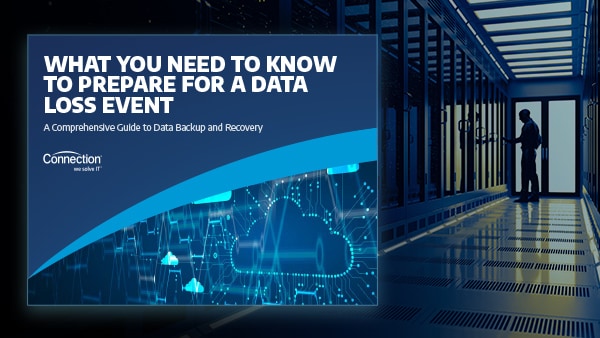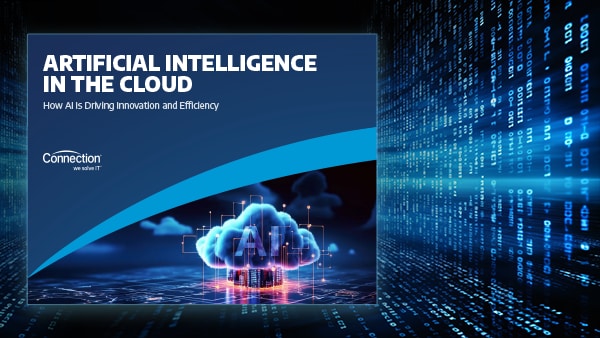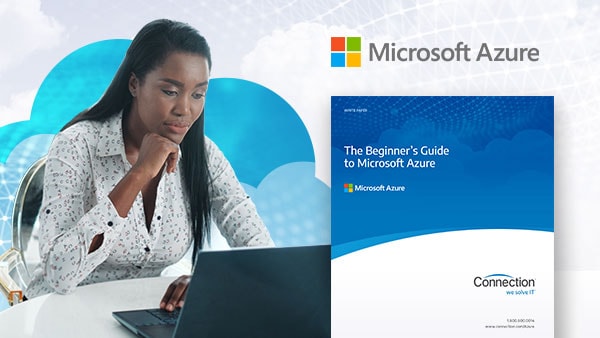Cloud Technology
Cloud Computing Technologies Powering Businesses

- Software as a Service (SaaS)
- Infrastructure as a Service (IaaS)
- Platform as a Service (PaaS)
- Backend as a Service (BaaS)
- Security as a Service (SECaaS)
- Desktop as a Service (DaaS)
- Database as a Service (DBaaS)
- Disaster Recovery as a Service (DRaaS)
- Unified Communications as a Service (UCaaS)
- Desktop Virtualization Infrastructure (VDI)
With an experienced cloud services partner on your side, you’ll maximize the benefits of cloud technology implementations and mitigate the risks. Connection is your one stop for all things Cloud Technology.

The Value of Dell APEX
Adopt a modern technology consumption model that drives innovation.3 Ways to Futureproof Your IT Strategy with Cloud Technologies
Futureproofing your IT strategy means building an infrastructure that not only meets current demands but is also flexible enough to adapt to future challenges and opportunities. Failure to do so can lead to increased costs and a diminished competitive edge. Fortunately, with the advent of cloud technology, businesses now have powerful tools at their disposal to create IT strategies that are both robust and adaptable.
Here’s a look at how these cloud-based solutions can help futureproof your IT strategy.

The Role of Virtualization in Futureproofing IT
Virtualization is a fundamental component of modern IT strategies, offering the flexibility, scalability, and cost efficiency essential for staying competitive. By creating virtual versions of servers, desktops, and storage devices, businesses can optimize resource utilization, reduce reliance on physical hardware, and build a more agile and resilient infrastructure.Some of the key benefits of virtualization include:
- Flexibility: Virtualization enables dynamic resource allocation, allowing IT teams to quickly adjust CPU, memory, and storage across virtual machines without physical intervention. Platforms like VMware vSphere and Microsoft Hyper-V support both Windows and Linux, ensuring multiplatform compatibility and the simplifying of IT management.
- Scalability: Virtualized environments allow businesses to easily scale resources up or down in response to changing demands. For example, during peak periods, companies can quickly increase computing power and then scale back when demand decreases. This elasticity is crucial for maintaining optimal performance without overspending.
- Cost Efficiency: Virtualization can significantly reduce hardware and operational costs. Companies can decrease their physical server count by 50% to 70%, leading to over 70% savings in hardware costs. Productivity gains are another way virtualization can offer cost savings. In fact, 83% of IT professionals say one-time server management tasks were improved by factors of at least 25% in a virtual environment over a physical one.
Leveraging Cloud Services for a Futureproof IT Strategy
With global spending on public cloud services expected to reach $675.4 billion this year, the shift to cloud technology is accelerating. Cloud services are crucial for futureproofing your IT strategy because they often offer greater flexibility, scalability, and resilience than on-premises services.Cloud offerings like infrastructure as a service (IaaS), platform as a service (PaaS), and software as a service (SaaS) provide on-demand access to IT resources. This allows businesses to respond quickly to changes without significant capital investments. In addition, cloud technology provides the foundation for ongoing innovation and growth in a rapidly evolving digital landscape by:
- Enhancing Flexibility: Cloud services enable global accessibility and remote work, ensuring that IT resources can be accessed from anywhere. Customization and integration with existing systems allow businesses to tailor their cloud solutions to specific needs, enhancing operational agility.
- Scalability and Cost Management: The elasticity of cloud services lets businesses scale resources like processing power and storage as needed. This pay-as-you-go model reduces upfront costs and offers financial flexibility, allowing companies to manage expenses efficiently during periods of fluctuating demand.
- Resilience: Cloud services improve business continuity with automated backups and disaster recovery solutions. Robust security features—such as encryption and compliance with regulatory standards—ensure data protection and accessibility during disruptions.
Embracing Everything as a Service (XaaS) for IT Agility
Everything as a service (XaaS), which refers to the delivery of any IT function as a service, is rapidly transforming how businesses approach IT strategy. The XaaS market, valued at $559.14 billion in 2022, is projected to grow to $3.22 trillion by 2030, reflects its increasing importance.The rapid growth of XaaS across industries demonstrates its impact on IT agility. A primary reason for increased XaaS adoption is that it enables businesses to streamline operations by outsourcing non-core functions. This allows companies to focus on their primary business goals and be responsive to market changes without being bogged down by IT management.
XaaS models also help support rapid innovation by enabling businesses to quickly adopt the latest technologies, ensuring they stay competitive without the heavy costs associated with traditional IT upgrades. Finally, leveraging XaaS enhances operational efficiency, reduces costs, and improves scalability by allowing flexible resource allocation, enabling businesses to scale services according to their current needs.
Integrating Cloud Technology into Your IT Strategy
Integrating cloud technology into your IT strategy is crucial for building a futureproof, scalable, and resilient infrastructure. However, this process requires careful planning and consideration. This starts with assessing your current IT infrastructure to identify areas where cloud technology can add value. Determine which workloads are best suited for cloud migration, such as those requiring scalability or remote accessibility.You’ll also want to develop a cloud-first approach that prioritizes cloud solutions over traditional IT infrastructure. This strategy allows businesses to leverage the flexibility, scalability, and cost efficiency of cloud services, making it easier to adapt to changing demands.
When transitioning to cloud technology, it’s essential to conduct a cost-benefit analysis. While cloud services offer financial flexibility through a pay-as-you-go model, it’s important to weigh these benefits against potential costs, such as those associated with data migration and management.
Finally, security and compliance are also critical considerations. Ensure that your cloud provider adheres to industry regulations and offers robust security measures, such as encryption and multifactor authentication.
Futureproofing IT with Cloud Technology
Deploying virtualization, cloud services, and XaaS help create a flexible, scalable, and resilient IT strategy. These technologies enable businesses to adapt to rapid changes, reduce costs, and enhance operational efficiency. By integrating cloud technology into your IT infrastructure, you not only meet today’s demands but also prepare your organization for future growth and innovation.Cloud Technology Updates
Keep Me Informed about the Latest Cloud Computing News
Stay Informed
Complete the form below to get the latest Cloud Technology updates.
Virtualization

HPE Desktop Virtualization Solutions
Usher in a new era of change when you begin your journey to desktop virtualization. Sound complicated? It’s not with HPE at your side. Download this brief to learn how VDI can help your organization benefit through cost savings, simplified management, enhanced security, and increased productivity. Inside you’ll find information on:
- What type of users need VDI
- Why VDI is changing the IT landscape
- How HPE’s portfolio of solutions can help enable your agility
Parallels Remote Application Server (RAS)
Empower your employees to work from home instantly, while improving efficiency, productivity, and data security. Parallels RAS is a powerful all-in-one virtual desktop infrastructure solution that delivers applications and virtual desktops to any device—anytime, anywhere.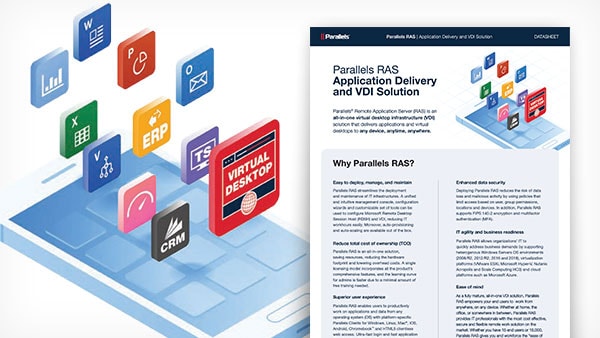
Parallels RAS Application Delivery and VDI Solution
Data Sheet
Why Parallels RAS?- Easy to deploy, manage, and maintain
- Reduce total cost of ownership
- Superior user experience
- Enhanced data security
- IT agility and business readiness
- Ease of mind

How Parallels Can Help Your Business Navigate a Post-COVID-19 World
White Paper
Many businesses are deciding whether temporary measures should evolve into permanent ones—as companies adopt long-term work-from-home policies. But these remote workplaces can only be effective if they are secure, easy to deploy, and allow employees full access to every application they need to successfully perform their roles.Anything as a Service (XaaS)
Your source for all things Cloud, Colocation, and Connectivity.
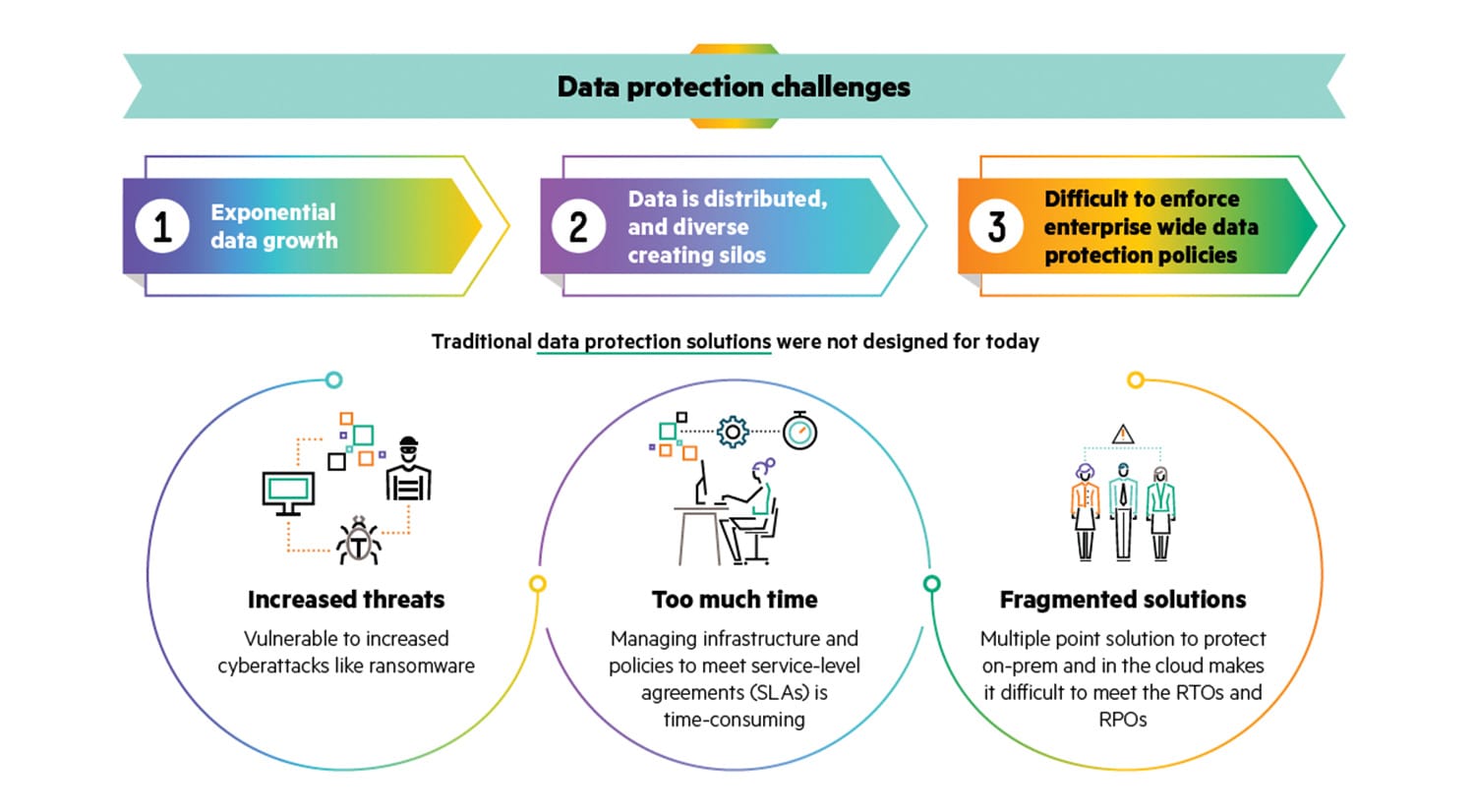
Backup as a Service (BaaS)
Traditional backup approaches are not designed for today’s IT environment. A backup and recovery plan is essential for your organization. Data loss events can happen at any time and take a variety of forms, from system failures to human error, cyberattacks, and more.The need for a robust backup and recovery strategy is undeniable, but finding the right solution to fit your needs can be difficult. The right solution should provide highly-efficient data security. It should also be simple to manage, scalable, futureproof, and much more.
Learn more about HPE GreenLake to see why it is the ideal BaaS solution for your organization.
A typical wide area network often includes a mix of private circuits, like MPLS and point-to-points, as well as public internet circuits, like fiber, copper and cable, all spread across wide geographic locations.
With cloud-based services becoming more popular, bandwidth requirements have exponentially increased, but each data packet is still routed without any consideration of other networks. This means that dozens of connections might lie dormant, while another is weighed down with traffic.
The solution to this inefficiency is software-defined wide area network. SD-WAN is an intelligent solution that efficiently manages all network connections and policies as a whole, reducing costs and harnessing all available bandwidth.
Picture your entire network as super highways in the metropolis of their enterprise. If one highway suffers from congestion, SD-WAN is the navigation that automatically routes data to a faster highway with less traffic. Even if one highway goes offline, traffic will still be securely routed to its destination, replacing need for VPNs.
SD-WAN can also prioritize critical applications like voice for best customer experience. SD-WAN harnesses the total throughput of all networks with minimal management and maximum data reporting. You can swap or supplement existing networks for inexpensive public connections, optimizing performance and cost. Once configured, deploying additional branches is quick and dynamic.
What complaints do users have regarding network or application performance? Which connections are underutilized or only used for backup? What are your mission-critical applications and where are they located? What are your biggest challenges in managing network costs? If you could improve one thing about your network, what would it be?
Software-Defined Wide Area Networking (SD-WAN)
SD-WAN provides numerous benefits, including enhanced network efficiency and reduced network operating costs. But the selection of the right SD-WAN solution can be time-consuming and complex. There’s a lot of criteria to consider, including applications supported, security and geographic needs, preference for self or turnkey management, and more.The AVANT Research and Analytics Report will help you to evaluate this wide variety of options and considerations that should factor into your technology planning processes. For more direct assistance, reach out to a Connection specialist.
Unified Communications as a Service (UCaaS)
A Guide to Maximizing UCaaS Implementation
There are a number of different products and services that make up Unified Communications as a Service, but the true value of UCaaS lies in its interoperability and integration. Combining the various features into a fully compatible communications solution displaces a series of point products, simplifies management, strengthens interoperability, and in many cases, reduces cost and complexity.The AVANT Research and Analytics Report offers a great overview of the UCaaS industry, including the results of an extensive market survey. However, if you’d like more direct assistance, reach out to a Connection specialist to start (or upgrade) your UCaaS implementation today.
With the accelerating pace of change in IT, it has never been more critical to create value with your communication applications. For many years, phone lines and legacy PBX hardware systems were able to meet these needs. These days, those are the table stakes. With demanding employee and consumer level expectations and exponential potential for business growth, legacy hardware systems simply cannot keep up with the pace of change to give your business the edge it needs to stay competitive. This is especially true when looking at increased needs for mobile devices and mobile workforce. The solution is unified communications as a service or UCAAS.
UCAAS is a managed cloud-based solution helping businesses take full advantage of ever-changing communication needs. UCAAS always stays up-to-date, eliminating the need to pay and implement upgrades. Additionally, native integrations to cloud platforms such as Salesforce, Slack, Office 365 or Google apps further enhance end-user productivity, while allowing you to retain your existing legacy on premise investments, such as handsets and overhead paging systems. Voice, fax, social messaging, conferencing, and more are combined into a unified application experience accessible from any device anywhere.
With UCAAS, your communication platform becomes a business analytics tool, allowing you to delve into your business call details with customizable dashboards and artificial intelligence agents, so management can work smarter and allocate resources with confidence. The result, IT is freed for managing hardware and servers to delivering strategic business needs. Finance is freed from planning capital expenditures to analyzing business impacts, and the leaders are free from the limitations of isolated systems to anywhere communications. UCAAS allows you to stay ahead of the accelerating pace of change.
Is your current communications platform up-to-date. Tell me about the last time you went through an upgrade. What were the pain points? What are your biggest challenges with your current communication platform? What problems are disparate phone services causing in your business? What integration and reporting insights do you expect with your CRM and business tools? What are your internal users' and end customers' opinions of your communication experience?

Could Rethinking Storage Speed Up Your Cloud Performance and Reduce Costs?
Businesses move their applications and data to the cloud for agility, cost savings, and streamlined performance. Initially, the gains organizations make with cloud computing can have a major impact on both increasing performance and reducing costs. Yet over time, cloud performance can slow—and costs can rise—as maturing cloud ecosystems aren’t maintained or optimized. If you’re interested in getting more from your cloud deployments, read our free eBook to discover why storage can be the key to unlocking effective performance and affordable rates.
The Essential Cloud Technologies for Success
As the demand for agile and scalable infrastructure has increased and there’s been a dramatic shift to remote and hybrid work solutions, cloud adoption has evolved from a technology strategy to a business strategy. Cloud adoption is now not only pervasive, but the default. Read our free eBook to discover the 5 cloud technologies to consider in 2024 and beyond.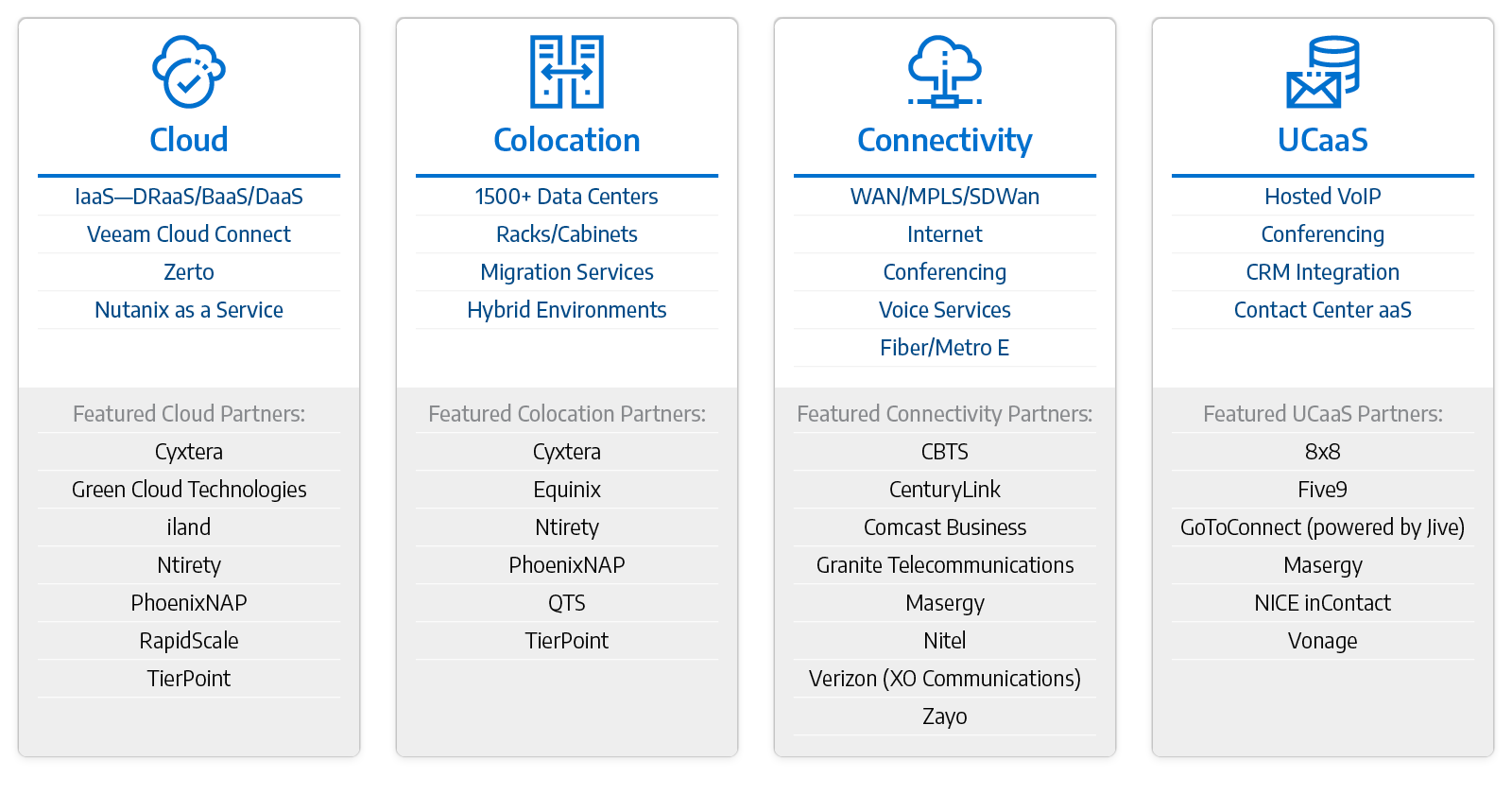
Cloud Security

Security Report
by AVANT Research and Analytics
The first step in your security posture should be a true and honest assessment of what is already in place. The operative term here is “true and honest.” It may be tempting to gloss over newly discovered gaps or issues regarding the comprehensiveness of your company’s IT security infrastructure. This is especially true if the discrepancies might reflect poorly on specific individuals. However, a problem found is nearly as crucial as a problem solved.
Download the 36-Page AVANT Research and Analytics Security Report to learn more.
Assess and mitigate your organizations’ security risk and ease the burden of protecting your most critical assets, including data availability and privacy.
Learn how your company can identify and eliminate cybersecurity risk.
Has your organization taken the time to identify existing security flaws, device and network vulnerabilities, and malicious network activity?
Discover how to secure your IT infrastructure.
Don’t wait―proactively ensure your business is meeting its regulatory requirements.
Get expert help to manage your risk and stay in industry compliance.
Does your organization need help responding to security threats?
Get expert help to monitor and manage security events.
Identify potential redundancies and inefficiencies before they impact the bottom line.
Learn how to unify your stack to reduce the complexity of your technology.
Connection Cloud Services
Whether you are beginning to determine the best cloud model to suit your needs, assessing which application workloads can be safely moved to the cloud, or considering which cloud service provider would serve the best return on your investment, our cloud experts can help.
Learn how your company can maximize its investment in the cloud.
Does your company have significant investments in Microsoft products, services, tools, and frameworks?
Learn how to easily migrate your workloads to Azure.
Successful cloud migrations require understanding how cloud strengths and constraints align with your application portfolio.
Get expert help to map the optimal cloud migration path.
Does your company utilize VMware in your on-premises data center?
Find out if VMware Cloud on AWS is the right fit for your business.
Cloud Technology Resources
Connection Community
How Is Your MSP Managing Your Azure Workload?
Clients rely on their managed service provider (MSP) to oversee critical workloads in Azure—yet few know how the providers work... Read More
How to Simplify Data Management in Hybrid...
The adoption of complex IT infrastructures that combine on-premises systems with hybrid cloud environments is becoming increasingly common. According to... Read More
Why Standardization Across Hybrid IT...
As businesses increasingly adopt multicloud hybrid environments, data protection becomes more challenging. By nature, multicloud and hybrid environments expand the... Read More
Top 8 Benefits of Backup and Recovery as a...
As businesses navigate an increasingly interconnected and data-driven landscape, the stakes for data loss or unauthorized access have never been... Read More
8 Must-ask Questions for a Robust Backup...
Companies that don’t have a data backup and recovery strategy risk data loss with potentially catastrophic consequences to their businesses.... Read More












